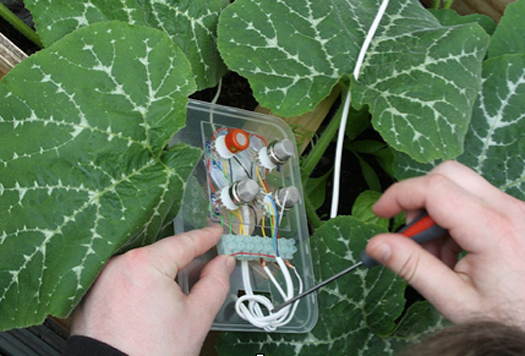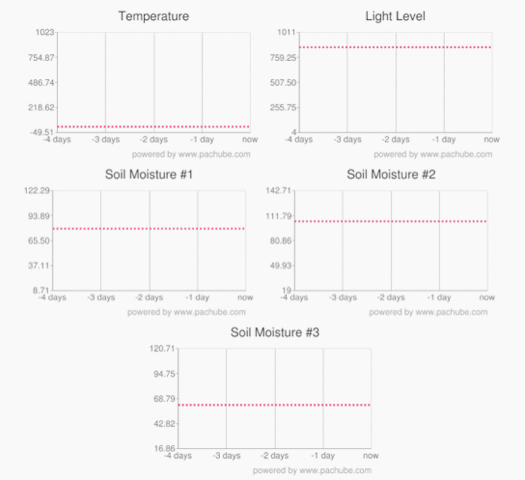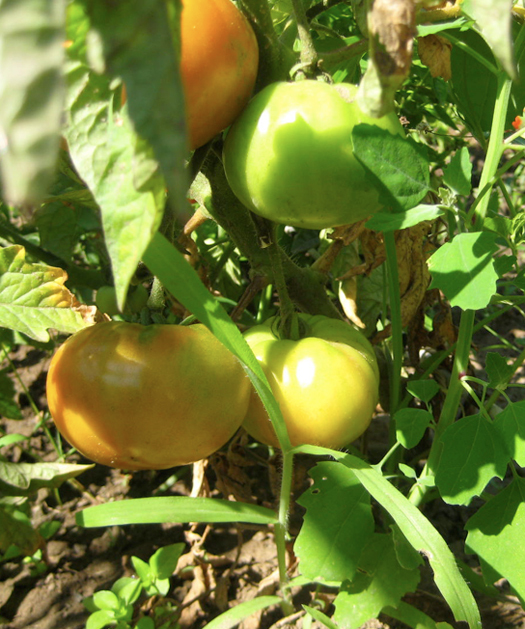The day after I celebrated his Kickstarter success with Tyler Caruso, co-founder of Seeing Green, which is about measuring the value of urban agriculture, I read a fascinating piece by Simon Kuper in the FT about the use of data to analyse every tiny aspect of a football match.
“Largely unseen by public and media, data on players have begun driving clubs’ decisions,” Kuper writes, “particularly decisions about which players to buy and sell.” Chelsea’s performance director, for example, has amassed 32 million data points over 13,000 games. At other clubs, too, obscure statisticians in back-rooms will help shape this summer’s player transfer market. Just as baseball has turned into more of a science, Kuper concludes, soccer will too.
This prompted me to wonder: Could statistics and data-mining come to dominate food growing, too?
My curiosity was further piqued when I hard about a “computer that runs your garden” also known as an Automated Garden Facility (AGF,) also known as Garduino.

The idea of Garduino, which is built on the Arduino platform, is to monitor the garden environment in real time and use that information to water plants when they're thirsty, turn on supplemental lights when the sun's not bright enough, and alert you when temperatures are uncomfortably chilly for plants. What's up-and-running so far is a pilot application that measures the water status of a plant where the information is collected by an NSLU2 mini linux server.
Garduino is pretty cool, but I can't help worrying that its ambitions are too narrowly-focused. It's spec surely needs to include the thorny issue of Measuring What Matters (MWM tm.)
The picture below, for example, is a close-up of my tomato beds here in France. What you see is a tomato plant, doing OK, and two other plants, also doing OK, that were formerly known as weeds.

One problem with Garduino is that the conditions it measures and regulates are exactly the same for tomatoes, as they are for the weeds. To complicate matters further, some “weeds” are more beneficial to the local ecosystem than others — or so one learns from permaculture. You need to know which ones bring benefit, or not, in order to decide which ones to “weed” — that is, kill — or not.
Although Garduino is resolutely bottom-up and open source, and stands in cultural opposition to the monopolistic and evil tendencies of agribusiness, I'm not sure how diferent it is, in kind, from Accenture's 2004 Pickberry Vineyard project. Then, a wireless mesh of networked sensors was deployed over a 30-acre premium vineyard. Is Garduino not a child of the same control-seeking mentality?
The answer is probably yes and no. My intutition is that *some* Garduino-like platforms will be needed as we make the transition to resilient food systems in all their complexity and diversity. How much tech, and what kinds, and who will use and own and control them, need to be discussed as we go along. We'll need evidence and data, not just arguments, to get the attention of wavering policy makers.
The last time we discussed appropriate technology widely was during the 1970s when we'd barely thought about, let alone deployed, the internet, sensors, wifi, or an internet of things. Today's new times are like the 1970s, only different: It fels like a good moment to revisit and reframe the app-tech debate.

Comments [2]
See episode 2 of 'All Watched Over by Machines of Loving Grace' documentary.
06.29.11
09:34
06.30.11
05:50